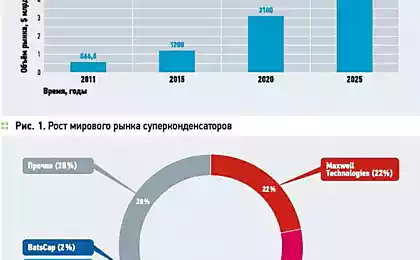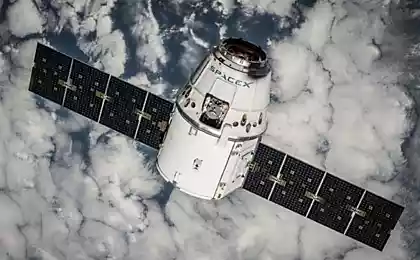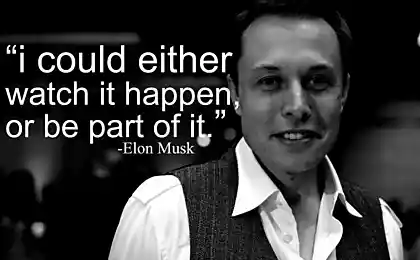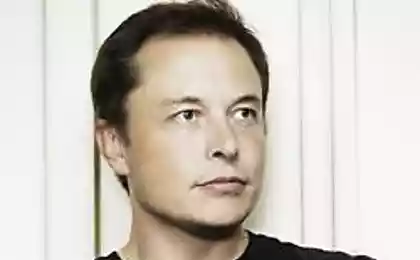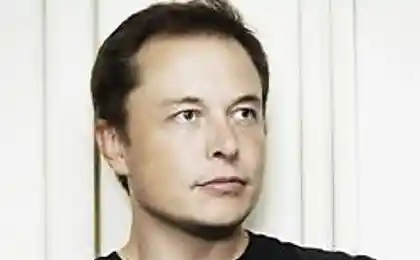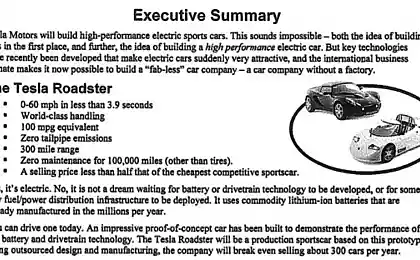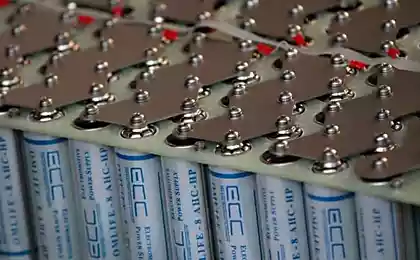263
The Supercapacitor Revolution: The First Victim by Elon Musk
The hype surrounding Elon Musk’s construction of a “Gigafactory of batteries” for the production of lithium-ion batteries has not yet subsided, as there was a report of an event that could significantly adjust the plans of the “billionaire revolutionary”.
We are talking about the recent press release of Sunvault Energy Inc., which together with the Edison Power Company managed to create the world’s largest graphene supercapacitor with a capacity of 10 thousand (!) Farad.
This figure is so phenomenal that domestic experts are doubtful - in electrical engineering even 20 Microfarads (that is, 0.02 Farad), this is a lot. The director of Sunvault Energy is Bill Richardson, former governor of New Mexico and former US Secretary of Energy. Bill Richardson is a well-known and respected man: he served as US ambassador to the UN, worked for several years at the Kissinger and McLarty think tank, and for his successes in releasing Americans captured by militants in various “hot spots”, he was even nominated for the Nobel Peace Prize. In 2008, he was one of the Democratic candidates for the presidency of the United States, but lost to Barack Obama.
Today, Sunvault is booming, creating a joint venture with the Edison Power Company called Supersunvault, and the board of directors of the new company included not only scientists (one of the directors is a biochemist, another is an enterprising oncologist), but also famous people with good business acumen. I note that only in the last two months, the company has increased the capacity of its supercapacitors ten times – from a thousand to 10,000 Farads, and promises to increase it even more so that the energy stored in the capacitor is enough to power the whole house, that is – Sunvault is ready to act as a direct competitor to Elon Musk, who plans to produce superbatteries of the Powerwall type with a capacity of about 10 kWh.
Benefits of Graphene Technology and the End of the Gigafactory
Here it is necessary to remind about the main difference between capacitors and batteries - if the first quickly charge and discharge, but accumulate little energy, then batteries - on the contrary. The main advantages of graphene supercapacitors.
1. Fast charging – capacitors charge about 100-1000 times faster than batteries.
2. Cheap: If conventional lithium-ion batteries cost about $ 500 for 1 kWh of stored energy, the supercapacitor is only 100, and by the end of the year the creators promise to reduce the cost to $ 40. In its composition, this ordinary carbon is one of the most abundant chemical elements on Earth.
3. Compact and energy density. The new graphene supercapacitor amazes not only with its fantastic capacity, surpassing the known samples by about a thousand times, but also with its compactness – in size it is with a small book, that is, one hundred times more compact than the capacitors currently used by 1 Farad.
4. Safety and sustainability. They are much safer than batteries that warm up, contain dangerous chemicals, and sometimes even explode. Graphene itself is a biodegradable substance, that is, in the sun it simply decays and does not spoil the environment. It is chemically inactive and does not damage the environment.
5. The simplicity of the new technology for obtaining graphene. The vast territory and investment, the mass of workers, the toxic and dangerous substances used in the technological process of lithium-ion batteries – all this stands in stark contrast to the striking simplicity of the new technology. The fact is that graphene (that is, the thinnest, monatomic film of carbon) at Sunvault is obtained ... with the help of a conventional CD-ROM, on which a portion of graphite suspension is poured. Then the disc is inserted into a regular DVD drive, and burned by a laser according to a special program - and the graphene layer is ready! It is reported that the discovery was made by chance – a student Maher El-Kadi, who worked in the laboratory of chemist Richard Kaner. He then burned the disk using LightScribe and produced a layer of graphene.
Moreover, according to Sunvault CEO Gary Monaghan at a conference on Wall Street, the firm is working to ensure that graphene energy storage can be made with conventional 3D printing – and this will make their production not only penny, but also almost universally available. And when combined with low-cost solar panels (today, their cost has dropped to $1.3 per watt), graphene supercapacitors will give millions of people the chance to gain energy independence by disconnecting from power grids altogether, and even more – to become electricity suppliers themselves, destroying “natural” monopolies.
Thus, there is no doubt: graphene supercapacitors are a revolutionary breakthrough in the field of energy storage. And this is bad news for Elon Musk – building a plant in Nevada will cost him about $ 5 billion, which even without such competitors would not be easy. It seems that if the construction of the plant in Nevada is already underway, and is likely to be overdue, then the other three that Musk planned are unlikely to be laid.
Market entry? Not as soon as I'd like.
The revolution of this technology is obvious. It is unclear when it will be released to the market. Already today, Elon Musk’s cumbersome and expensive Gigafactory project looks like a dinosaur of industrialism.
However, no matter how revolutionary, necessary and environmentally friendly a new technology may be, this does not mean that it will come to us in a year or two. The world of capital cannot avoid financial shocks, but it has rather successfully avoided technological shocks. In such cases, behind-the-scenes agreements between major investors and political players begin to work. Sunvault is a firm based in Canada, and the board of directors includes people who, although they have extensive connections in the political elite of the United States, are not part of its petrodollar core, a more or less obvious struggle with which, apparently, has already begun.
What is most important for us is the opportunities that emerging energy technologies open up: energy independence for the country, and in the future for each of its citizens. Of course, graphene supercapacitors are rather a “hybrid”, transitional technology, it does not allow direct energy generation, unlike magneto-gravity technologies, which promise to completely change the scientific paradigm and appearance of the whole world.
Finally, there are revolutionary financial technologies that are effectively tabooed by the global petrodollar mafia. And yet it is a very impressive breakthrough, all the more interesting because it is happening in the “den of the petrodollar beast” – in the United States.
Just six months ago, I wrote about the success of the Italians in cold fusion technology, but during this time we learned about the impressive LENR technology of the American company SolarTrends, the breakthrough of the German Gaya-Rosch, and now about the truly revolutionary technology of graphene storage. Even this short list shows that the problem is not that our government, or any other government, does not have the ability to reduce the bills we receive for gas and electricity, or even an opaque calculation of tariffs.
The root of evil lies in the ignorance of those who pay the bills, and the unwillingness to change something from those who write them. Only for ordinary people is electricity. In reality, energy is power.
P.S. And remember, just by changing your consciousness – together we change the world!
Source: congeniator.com/revolution-supercapacitors
6 components of a perfect relationship in a pair
Tesla Supercharger: how free gas stations are changing the world

